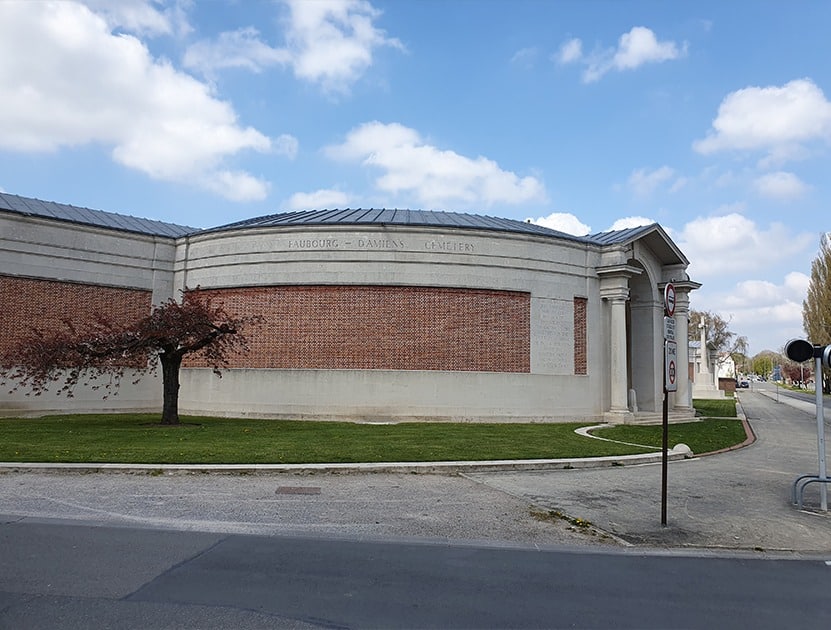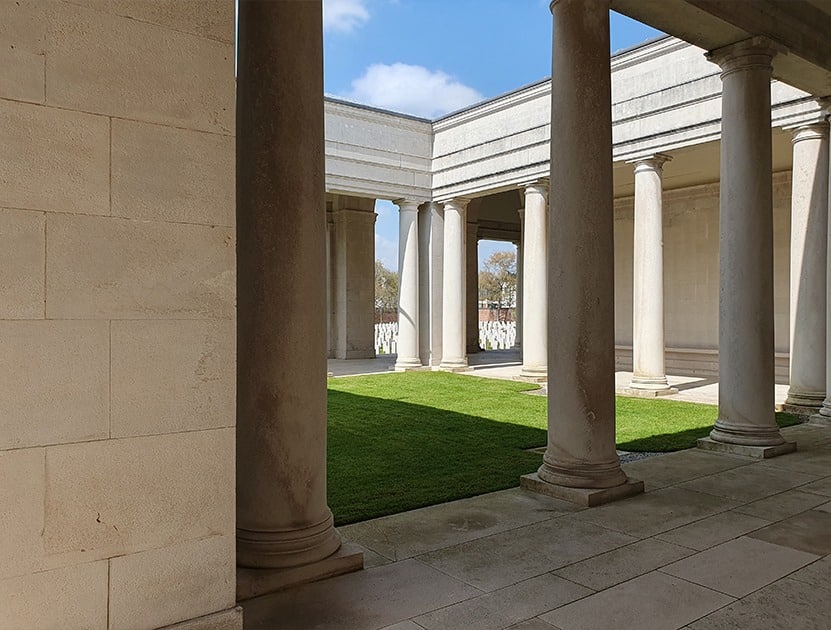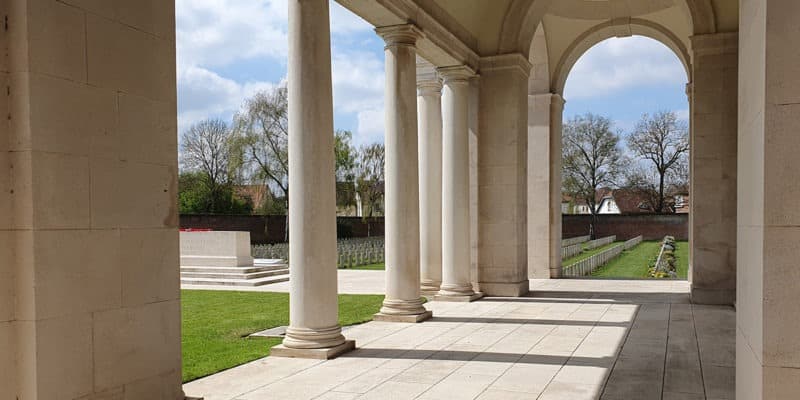The Faubourg d’Amiens Military Cemetery in Arras bears witness to the heavy toll paid by Commonwealth forces in the First World War. Located on the Boulevard du Général de Gaulle, this place of remembrance contains 2,651 soldiers’ graves and also honors over 35,000 missing persons. Let’s take a look at what you can discover here.
Arras at the heart of the Great War battles
During the First World War, the town of Arras found itself at the center of fierce fighting between Allied troops and the German armed forces. In contact with the front line, the town became a strategic fortress under the protection of the British Expeditionary Force (B.E.F.) from the spring of 1916.
Arras’ vast underground networks, known as “boves”, played a crucial role in the Allied offensive of 1917, allowing the enemy to be taken by surprise; the samewas true of the Carrière Wellington. Despite heavy loss of life, this military maneuver proved to be a decisive victory for the Allied forces. The strategic position of Arras, close to the front lines, made it a major challenge for both sides. The Arras underground tunnels, mined for centuries to extract chalk, provided shelter and a discreet means of movement for the troops.
During the 1917 offensive, some 20,000 British soldiers emerged from the “boves” to attack the German trenches, creating total confusion among the enemy forces. This surprise attack led to the capture of several German officers, sometimes even while they were having breakfast. Despite the tactical success of the offensive, the Commonwealth forces suffered devastating losses, with almost 159,000 men falling in 39 days, an average of over 4,076 dead per day. The battle was one of the bloodiest of the First World War, but it was also a major military victory for the Allies, perhaps the only one in 1917. Later, in 1918, the Germans tried unsuccessfully to retake the town of Arras. 
An egalitarian and symbolic cemetery
The Faubourg d’Amiens Military Cemetery embodies equality between the ranks, where soldiers and officers rub shoulders in eternal repose. The Cross of Sacrifice, emblematic of the Christian faith of the majority of servicemen, coexists with the Stele of Remembrance, intended to honor other beliefs as well as atheists. The graves at this place of remembrance include those of Commonwealth soldiers who served in the First World War, as well as those of other nationalities and those of the Second World War, bearing witness to the universality of human sacrifice in armed conflict.
A tribute to the unburied
The memorial at the Faubourg d’Amiens cemetery pays poignant tribute to the 35,000 soldiers whose remains have never been found. These brave fighters, from the UK, South Africa and New Zealand, faced extremely difficult conditions and fearsomely destructive weapons. In addition, the Flying Services Memorial commemorates the airmen of the Royal Naval Air Service, the Royal Flying Corps and the Royal Air Force, whose graves have never been located, perpetuating the memory of their sacrifice and bravery.

On the walls are the names of the heroes of the Great War
A closer look at British aviators
During the First World War, the United Kingdom’s airmen played a vital role in military operations.
Their efforts were divided between three distinct air services: the Royal Naval Air Service (RNAS), the Royal Flying Corps (RFC) and, later, the Royal Air Force (RAF). The Royal Naval Air Service (RNAS) was the aeronautical arm of the Royal Navy. Created in 1914, it was primarily responsible for maritime reconnaissance, submarine hunting, air support to naval operations and bombing enemy bases. RNAS airmen flew seaplanes, airships and fighter planes.
The Royal Flying Corps (RFC) was the air arm of the British Army, also created in 1914. Its main missions were aerial reconnaissance, observing artillery fire, bombing enemy positions and hunting down enemy aircraft. RFC airmen flew mainly fighters and reconnaissance biplanes.
In April 1918, the RNAS and RFC were merged to form the Royal Air Force (RAF), which became the world’s first independent air force. The merger was intended to improve the coordination and efficiency of British air operations. The RAF inherited the missions and aircraft of its predecessors, and its airmen continued to support land and naval operations until the end of the First World War and beyond.
The airmen of these three air services faced dangerous and often deadly combat conditions, not least because of rapid advances in aeronautical technology and air combat tactics. Their heroic actions and sacrifice made a significant contribution to the Allied war effort and ultimate victory.
Practical information
The Faubourg d’Amiens Military Cemetery is located at Boulevard du Général de Gaulle, 62000 Arras. It is a place of remembrance, bearing witness to the sacrifice of thousands of soldiers during the world wars.
Geographical location on map :
You can get there by heading towards the Vauban Citadel.
R.C.
